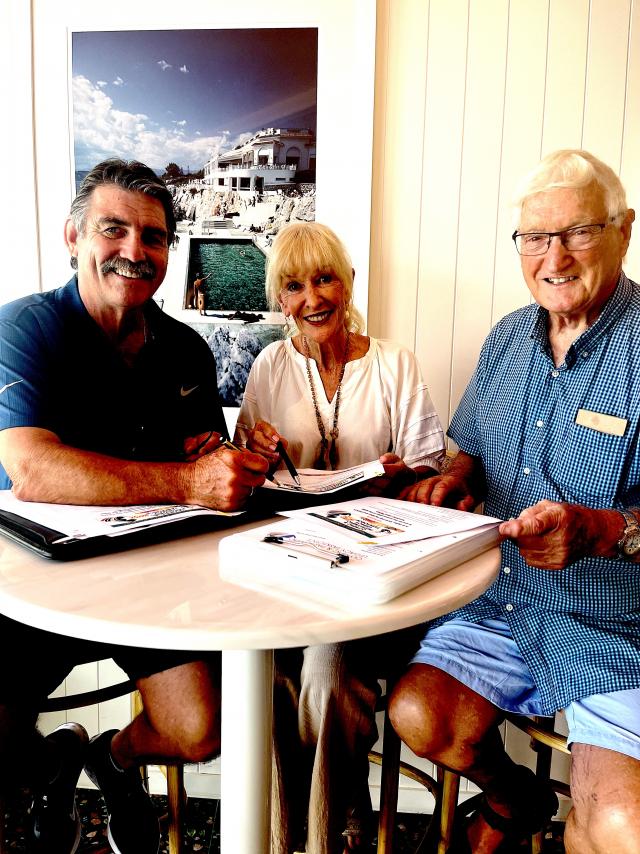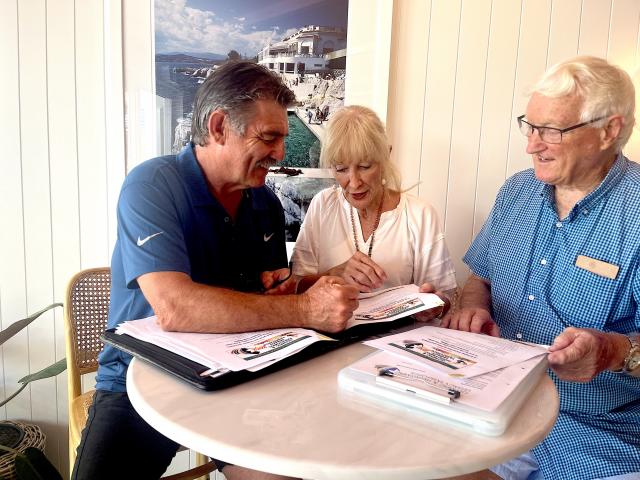
Who knew that Noosa Aquatic Centre, regarded by many as one of the best swim venues in the country, was a legacy of the Sydney 2000 Olympics?
As was Noosa Equestrian Centre at Doonan and several more of our best sports facilities along the Sunshine Coast, funded so that they could provide Olympic standard training facilities before the event and a community benefit after it. Such thinking resulted in our NAQ, originally planned as a 25-metre pool, becoming a world class facility.
Now, a group of current and former Olympians, sporting and public officials and community warriors is hoping to spread the magic across the coast again in the leadup to Brisbane 2032. The Sunshine Coast Region 2032 Olympic and Paralympic Legacy Taskforce has a long name but a short message: the Brisbane Games must spread its legacy across the entire South East Queensland region.
In the Sunshine Coast region, including Noosa and Cooloola, this would involve building or improving infrastructure that will benefit the entire community and by decentralising facilities, assist in cost of living issues and preventing the spread of youth crime.
In this mission the taskforce has a very good ally – the International Olympic Committee has now made it official policy to encourage the spread of resources across regions, rather than winning bid cities. Says taskforce member and Olympic academic and historian Ian Jobling: “That’s the IOC philosophy now, to spread the impact across regions, even to another country in some cases. So, in a sense, Brisbane doesn’t really have a choice, it’s policy.”
But, as far as our region is concerned, the SCR Taskforce, chaired by Sunshine Coast Basketball chief Shane Truscott, with Dawn Fraser as patron and including such warriors of sports and community campaigns as former Olympian Benny Pike and former Maroochy mayor Alison Barry-Jones, is taking nothing for granted.
Says Shane Truscott: “The creation of events like the Olympics, as we’re seeing worldwide, is incredibly difficult to pull together, not only financially but from a legacy point of view. Governments and populations are expecting more in return for the outlay, knowing that the Games themselves potentially may not make any money, so they’re looking at infrastructure benefits.
“With the Brisbane Olympics, quite apart from the IOC policy, there was a feeling that they couldn’t go it alone, that it would be better to spread out across the regions. The Gold Coast already had a number of Olympic standard facilities from the 2018 Commonwealth Games, and the other regions have jumped on board with the hope of getting something out of it. But we’re one step ahead. We’ve actually begun the process.”
Shane is referring to the taskforce’s advocacy to the state government and Noosa Council to upgrade Noosa’s coastal rowing facilities, following the admission of that sport to the Olympics in 2028.
He tells Noosa Today: “Our basic mission is to try to spread the limited funds that are going to be available [in the leadup to Brisbane 2032] across as many grass roots sports communities as we can. From our point of view, a couple of mega-stadiums are not going to cut it because the other social benefits don’t flow from that. For example, looking at basketball resources along the coast from Kawana to Wallace Park, we could extend them to deliver five five-court facilities, which is standard for state titles and other carnivals. But the more important benefit is that kids can have access to courts close to home, without parents having to drive them from one end of the coast to the other.
“One of our priorities is to cut back the long distance travel often required of parents to turn kids into champions. And it doesn’t have to involve a huge investment. If we look at what Peter Watson and Ian Jobling have been able to do with Coastal Rowing, for example, that is not a huge investment but the outcomes for the sport are huge. We’ve recently sent out a letter to a great number of sporting associations on the Sunshine Coast and asked, what would make your venue suitable as a training venue for internationals? If there are associations out there who haven’t got the letter, then we’d dearly like to hear from them.”
Alison Barry-Jones adds: “When I was in public office I always supported groups who had a passion, because you know they will drive the project to its outcome. They’re the groups we want to hear from. And our timing on this is very good because not only do we have local and state elections coming up, but governments are revisiting projects in line with the cost of living issues, like the Gabba rethink, for example. What we’re pointing to is smaller, more affordable projects that will deliver a broad community legacy.”
But if there is one big ticket item in the funding drawer, the taskforce is hoping it might be a multi-purpose sports and cultural centre, which has already been mentioned in despatches. Says Shane: “That would offer so much legacy benefit to a huge number of people in sport and in cultural pursuits. We acknowledge the real world of party politics but we don’t think along those lines. We’re happy to work with anyone to achieve this, and we’re happy to talk to any organisation which has a plan for growth. After all, we’re only eight years out.”
Sporting organisations in the Sunshine Coast region who have not received the introductory letter from the SCR Olympic and Paralympic Legacy Task Force are invited to contact Shane Truscott at struscott58@gmail.com









